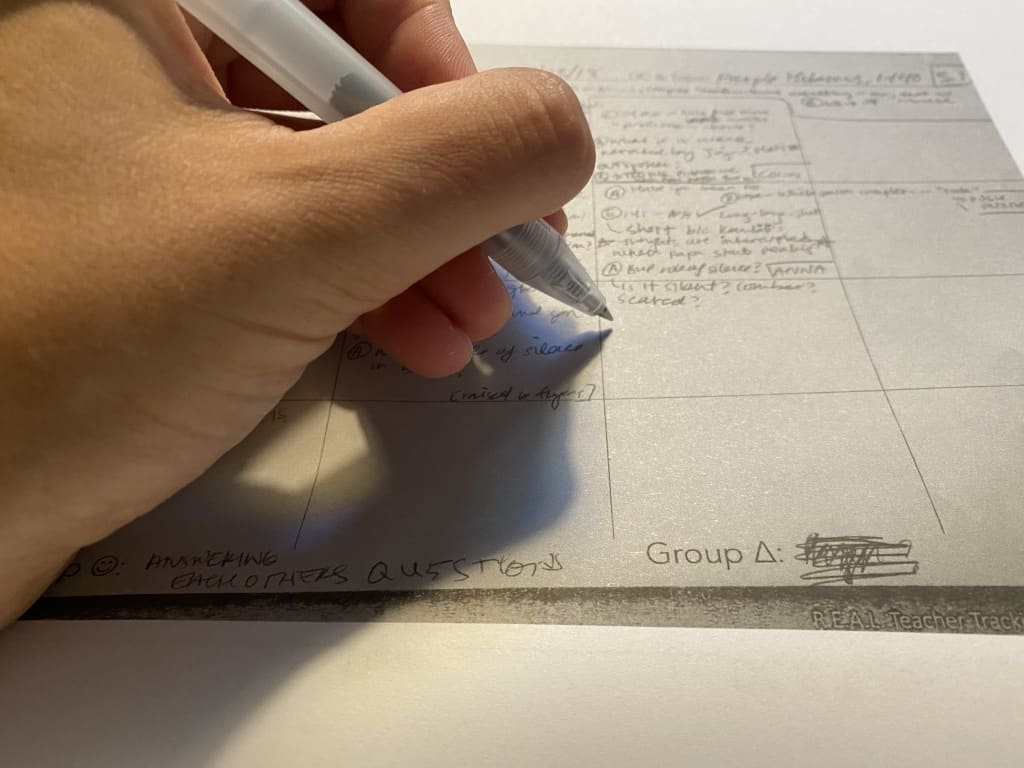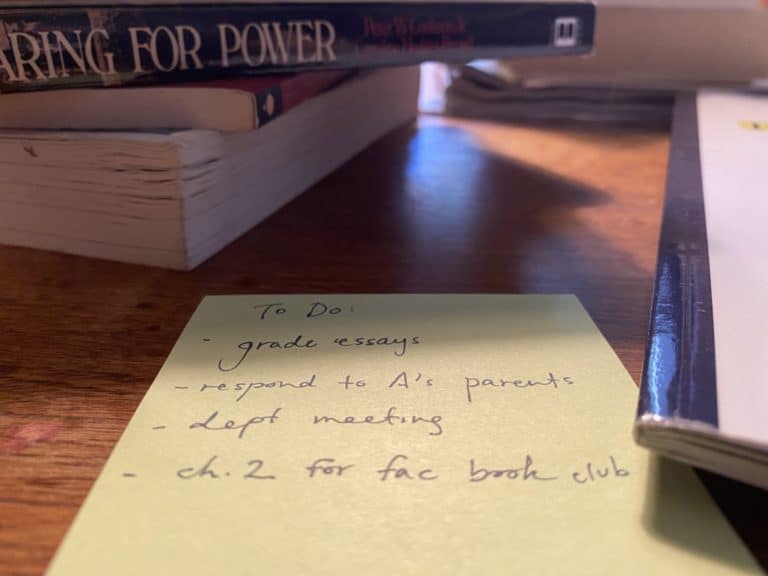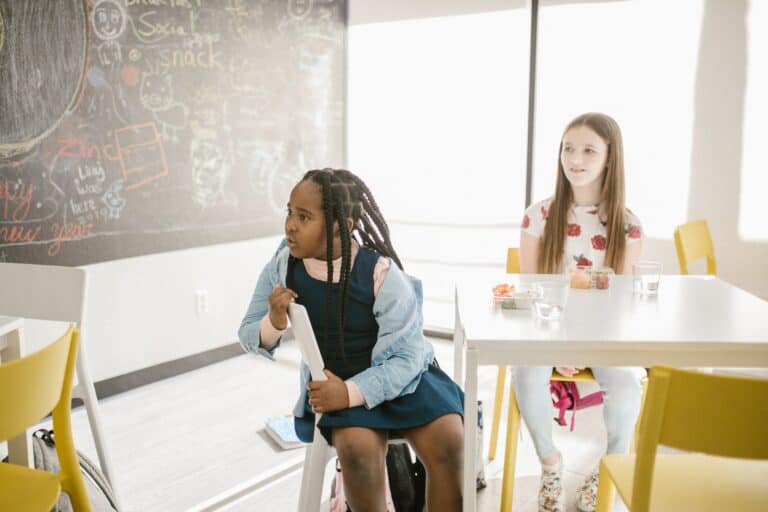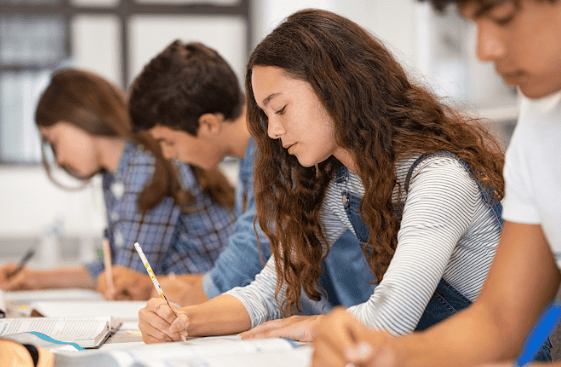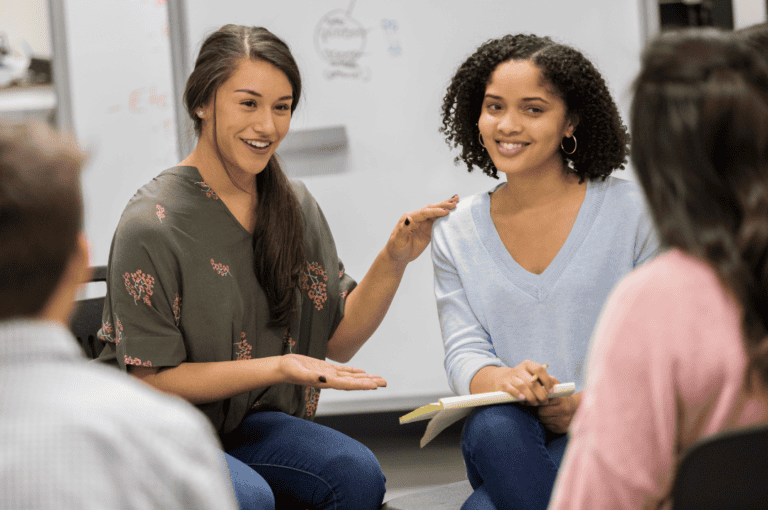Office Hours with Natalie Chapman
The Office Hours series recruits experts from within the field of education and beyond to share their specific knowledge and perspective on a topic or a series of topics. This week, IRT spoke with Natalie Chapman, Curriculum Specialist at No Red Ink, to discuss her work in writing instruction.
First, tell me about yourself. What’s been your journey to writing, to teaching writing, and to building resources for teaching writing?
I was a teacher for six years in Washington, D.C. right after college. I taught English to seventh- and eighth-graders. I loved everything curricular and pedagogical, but really felt like writing was the most challenging for teachers to teach and students to learn. I enjoyed the challenge, though, and it was satisfying to see the visible growth of a student as they improved as a writer.
When I moved to Boston, I was looking for something new to do. The core of teaching, curriculum development, was what excited me the most. I found NoRedInk, a product that helps millions of students improve their writing with targeted practice and supportive writing assignments. I was excited to help build out curriculum to help students at every stage of the writing process, and figure out how we can best support teachers and students, especially in this digital age.
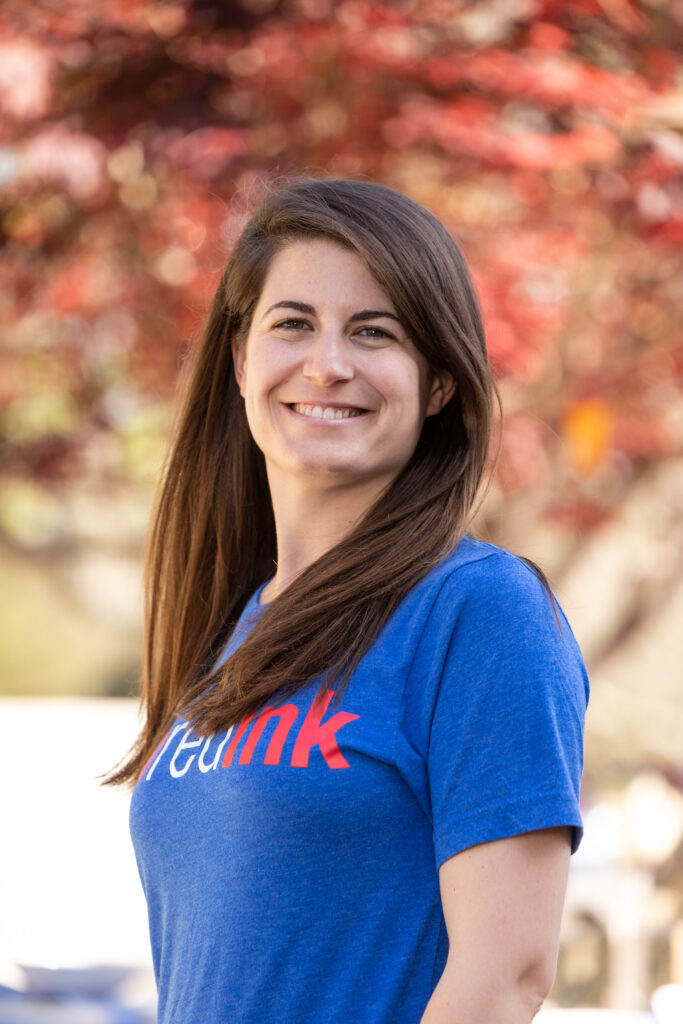
Tell me more about NoRedInk. In building NoRedInk resources, what are your team’s priorities? What do you see as important areas in writing instruction?
Several different things. We are always asking: “What do teachers want and need?” Through surveys, user interviews, and more, we really try to get a pulse on what strong writing looks like to teachers and how we can meet their expectations and needs with our instruction. We also ask how we can make their lives easier with our assignments (grading, organizing, offering texts to write about, etc.) to free up their time to focus on instruction and their students.
One of the principles that has come out of this research is that writing looks different depending on the task, audience, etc., and has led us to provide genre-based instruction. In our Guided Drafts assignment, where students write an essay with the support of tutorials, model essays, and tips, we have created targeted assignments for several different types of writing, so students can develop skills for different writing purposes.
Scaffolding is another area we try to help teachers with: NoRedInk includes adaptive practice, Quick Write assignments, and support at multiple stages of the writing process for longer essays. This provides opportunities for students to engage with writing at different levels and stages. In our instruction, we provide support for students at different points in their writing journey, like sentence frames for students who are learning to express their ideas clearly, and more advanced tips like style suggestions for those who are ready for it.
At IRT, we focus on class discussion and collaboration. What are ways that teachers can leverage classroom community to build writing skills?
Before, during, and after writing, there are opportunities to leverage classroom community, and I actually think that writing and discussion can both improve each other. We say that writing should happen every day and be a key element of the classroom, and I think discussion is the same way.
One way is to use writing as a discussion starter. On NoRedInk we have a Quick Write assignment and tons of creative and engaging questions that could start a classroom discussion. When writing can lead to a lively conversation, that can help create a positive culture around both writing and discussion.
The other way around, students can have discussions before writing. On NoRedInk we emphasize the importance of pre-writing; that can often be done verbally by discussing a text before writing about it, or even just saying out loud what you’re going to write about it. Sharing what you’re going to write about with a teacher or classmate is a useful check for understanding not unlike writing down your plan.
And of course there’s peer review. I found this hard to coordinate as a teacher, but it’s ultimately rewarding when students feel that they’re helping their peers improve as writers and vice versa. And really, reading others’ writing can create another opportunity to stimulate conversation. On NoRedInk, we offer an assignment where even remotely, students can give feedback on other students’ work, which I think is empowering.
What are some of the NoRedInk processes to make peer review successful?
The key to it is that it’s clearly defined. Students will read five other classmates’ thesis statements, or body paragraphs, and evaluate them on clear criteria (like, “Is the thesis an opinion? Is it controversial?”). Teachers can also have students gain mastery by practicing these skills before they even evaluate student writing. The general takeaway, in my mind, is that peer review works best when it’s very tangible and clear to students, so the task isn’t ambiguous and they know exactly what they should be looking for in their classmates’ writing.
I actually think that principle of breaking things down into tangible skills and steps applies just as directly to discussion. Discussion, like peer review and writing in general, can feel so big and hard to tackle. But if you break it down into specific skills, and use guiding questions, sentence frames, etc., you can make it accessible to students.
How do teachers using the NoRedInk curriculum identify and help students to identify the skills that they want to work on? I’d think that would carry over to or apply to skills building approaches more broadly.
Teachers often start with a diagnostic assessment to figure out what areas to focus on, and will create practice assignments from there. We also allow teachers to filter content by standards. When teachers assign practice assignments for specific skills (say, building compound and complex sentences), our topics are organized into a scaffolded pathway that leads students to a more complete, deeper understanding of the skill.
But there’s also a lot of flexibility in the site so teachers can meet their diverse needs. Our various types of assignments can fit together in different ways. One teacher might have students practice compound and complex sentences and then actually use them in a Quick Write assignment. Another might have students write, and then use the results to decide what specific skills they should focus on next. This combination of assignments help students see the skills as real things they can apply in authentic ways.
Also, students can practice skills independently. Because our topics are organized into these pathways, students can choose a general area to focus on and then track their progress and see how many topics they’ve mastered. Lots of students find this independent approach really rewarding!
What are the affordances of the digital world, and how do they shape what you do?
We try to do what is hard for teachers to do and what a computer can do: like making assignment creation and data compiling easy, but more importantly, to give students immediate feedback. A teacher simply can’t be working with every student in the class all the time, so that’s where we can come in. When practicing skills, students see lessons when they get an answer wrong. When they draft essays, they see examples and targeted tips. When they revise, they see suggestions for how to improve specific areas of their writing.
We’re always aiming to better meet teachers’ and students’ needs in this way, while knowing we can never replace teachers. We want to give teachers a devoted place where they can help their students become better writers. We aim for teachers to be confident in the support students are receiving on NoRedInk, so they can focus on working individually with students, leading class discussions, and all the other important work only they can do.
What’s one prediction you have for the future of education?
I think everything we teach is going to become more and more intertwined. No skill exists in a vacuum, and whether you’re in English class, Social Studies, or Science, there’s such a benefit of connecting skills and content knowledge, just as there’s a benefit of connecting discussion and writing. We’re already seeing this with more inclusion of history, diverse voices, social and environmental justice, etc. in ELA curriculum. I think there are fewer boundaries to the ways we think about the work of education. My prediction is that we’ll be working on ways to connect all of those important areas of learning while still being able to target and assess skills and growth.
Thank you for sharing your wisdom with us, Natalie!
